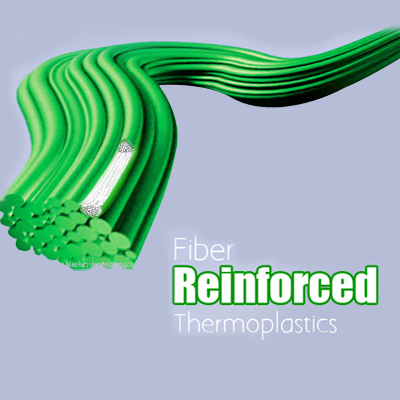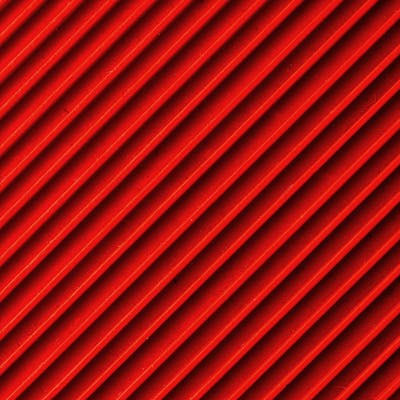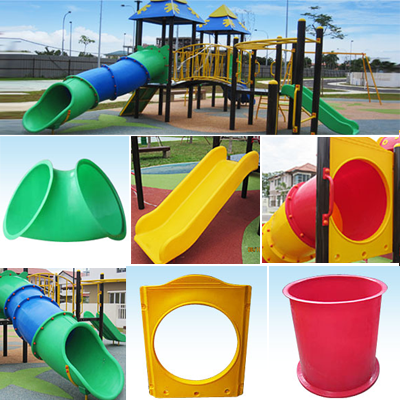Long Fiber Reinforced Thermoplastics Plastics

Long fiber reinforced thermoplastics or long fiber thermoplastics (LFT) are bulk molding materials that can feature continuous fiber filaments running the full length of the pellet allowing materials to exhibit simultaneous improvements in stiffness, strength, and impact resistance over different temperatures. The industry uses long fiber thermoplastics for varied reasons. However, a perennial conclusion is that the application would not be feasible using any other plastic material. Long fiber thermoplastics composites have opened possibilities for plastics to displace traditional materials and gain improved performance, design freedom, resistance towards corrosion, and weight reduction.
Long fiber thermoplastics composites acclaimed to have an exciting growth area in thermoplastics and are widely accepted as a viable alternative to traditional reinforced thermoplastics and metals for a vast array of applications.
Properties benefits: The long fiber thermoplastic composites benefits are easily understood by examining the entangled long fiber matrix formed in a finished part. By exposing a molded part to pyrolysis conditions, that commonly referred to as burn-off removes the polymer and leaves behind the glass reinforcing fibers allowing visual examination.
Greater performance: End-uses require greater performance than is attainable with short fiber thermoplastic products and where metal is not a desirable option due to weight or per part costs. LFT composites have gained rapid acceptance as a viable alternative to die castings, metal assemblies, and traditional plastic materials in a vast array of markets, including: industrial equipment, automotive, consumer goods, sports and leisure, and information technology. The extensive fiber network in an LFT part serves to improve most all performance characteristics and also inhibit crack propagation. Often referred to as "stiff and tough," LFT composites exhibit a wide range of performance advantages:
- Better impact resistance and rigidity at elevated and sub-zero temperature ranges (up to 5 times that achieved with short fiber thermoplastics)
- Modulus retention at elevated temperatures
- Creep resistance under constant load in severe environments
- Dimensional stability and resistance to warpage resulting from reduced shrinkage — which occurs as thermoplastic materials solidify during molding
Competitive pricing: Long fiber thermoplastic composites bridge the price performance gap between short fiber thermoplastic (SFT) materials and advanced composite materials that still being processable through efficient injection molding methods. Relative to short fiber materials long fiber thermoplastic composites are slightly more expensive, but yield price-to-performance advantages that make them attractive for end-use applications that need an engineered material solution. Due to the efficiencies of the injection molding manufacturing process LFT composites result in a lower per piece cost when replacing metal and provide a significant reduction in weight.
Pultrusion process: The RTP Company follows pultrusion process to manufacture long fiber thermoplastics that entails pulling continuous fiber rovings through a polymer melt in a specialized processing die. Pultrusion is dramatically different from the process followed to manufacture short fiber thermoplastics where chopped fiber is melt-blended with plastic resin using conventional extrusion compounding methods. The fiber length in a SFT pellets is typically less than 1 mm while in LFT pellets fiber length is up to 1/2 inch.
Edge over short fiber reinforced thermoplastics states that polymers reinforced with long fiber offer elevated performance at levels unattainable by similarly reinforced short fiber materials. While the physical requirements of individual applications should dictate which material is best positioned to provide a solution. Modulus is nearly equivalent between short and long fiber products, remaining more dependent on filler content than fiber length. Also usage of longer reinforcing fibers elevate the performance of thermoplastics to such a high degree that cheaper resins begin to provide the properties of more expensive engineering polymers. In many instances, long fiber composites have proven themselves to be an economically viable alternative to other reinforced plastics.
Special equipment is not required to injection mold long fiber thermoplastic (LFT) composites. However, to produce quality parts care should be taken to minimize fiber breakage and maximize fiber distribution and packing. The most important things to remember when molding long fiber composites are use low shear conditions to minimize unnecessary fiber filament breakage and maintain maximum physical properties in finished parts. Also low shear conditions commonly include: proper barrel temperatures, slower screw rotation, minimal back pressure, and moderate injection speeds.
The long fiber thermoplastic (LFT) composites are regularly molded into parts weighing in excess of 10 pounds and with surface areas comparable to doorways. The limiting factor is not LFT composites, but the availability of large injection or compression molding equipment.
Long fiber composite pellets in the place of direct in-line compounding (D-ILC or D-LFT) is economically viable, direct in-line compounding demands large numbers of large parts to be molded on a single machine. Deploying a direct in-line compounding system also requires a significant investment in specialized equipment that must be kept continuously in operation along with the development of in-house compounding expertise. For many applications and molders purchasing long fiber composites as precompounded pellets is a better option because of its flexibility and reduced capital investment.
The method of long fiber pellet + injection molding process is gaining momentum in worldwide long fiber applications.
- Continuous fiber processing method still holds its place due to its superior mechanical performances.
- New hybrid processing methods, e.g. direct in-line compounding are emerging for versatile fiber demands.
Though fiber composites are majorly used in automotive industry, the components scope is varied in different industries for different purposes. Hence, this efficient fiber composite can be used to replace many materials with its dynamic materialistic features and competitive cost cutting.



